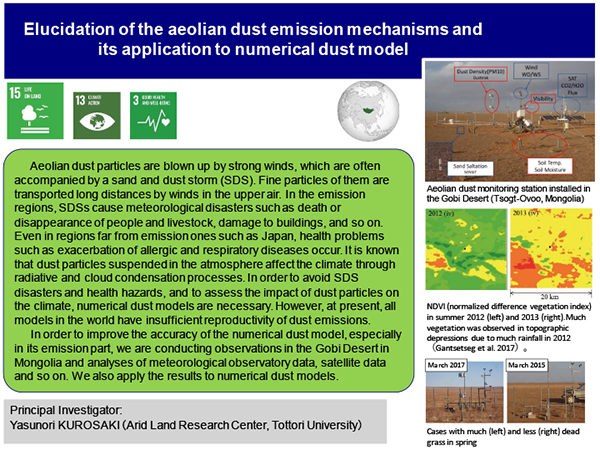ALRC's Key SDGs
Elucidation of the aeolian dust emission mechanisms and its application to numerical dust model
![]()
![]()
![]()
Aeolian dust particles are blown up by strong winds, which are often accompanied by a sand and dust storm (SDS). Fine particles of them are transported long distances by winds in the upper air. In the emission regions, SDSs cause meteorological disasters such as death or disappearance of people and livestock, damage to buildings, and so on. Even in regions far from emission ones such as Japan, health problems such as exacerbation of allergic and respiratory diseases occur. It is known that dust particles suspended in the atmosphere affect the climate through radiative and cloud condensation processes. In order to avoid SDS disasters and health hazards, and to assess the impact of dust particles on the climate, numerical dust models are necessary. However, at present, all models in the world have insufficient reproductivity of dust emissions.
In order to improve the accuracy of the numerical dust model, especially in its emission part, we are conducting observations in the Gobi Desert in Mongolia and analyses of meteorological observatory data, satellite data and so on. We also apply the results to numerical dust models.
Principal Investigator:Yasunori Kurosaki(Arid Land Research Center, Tottori University)




